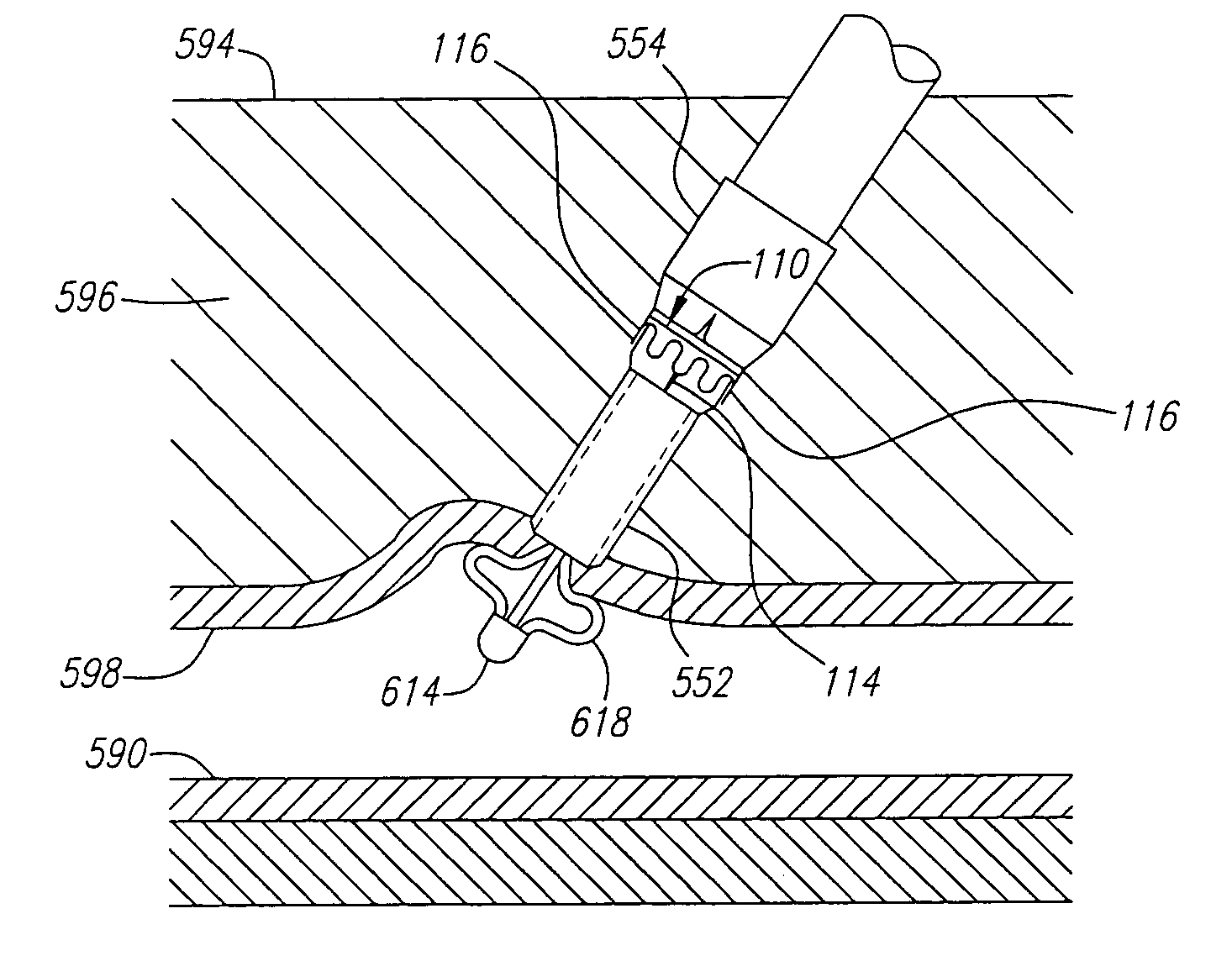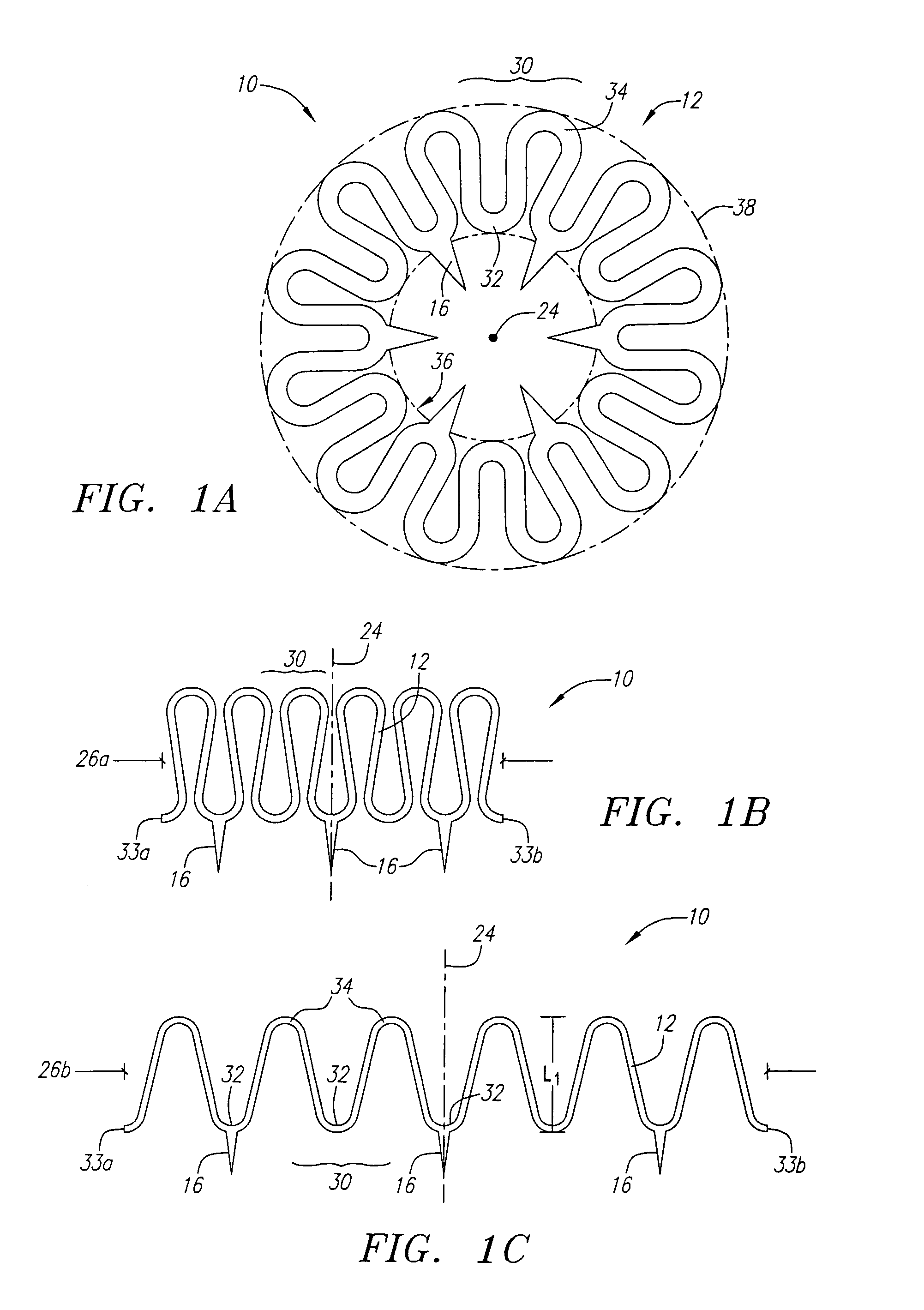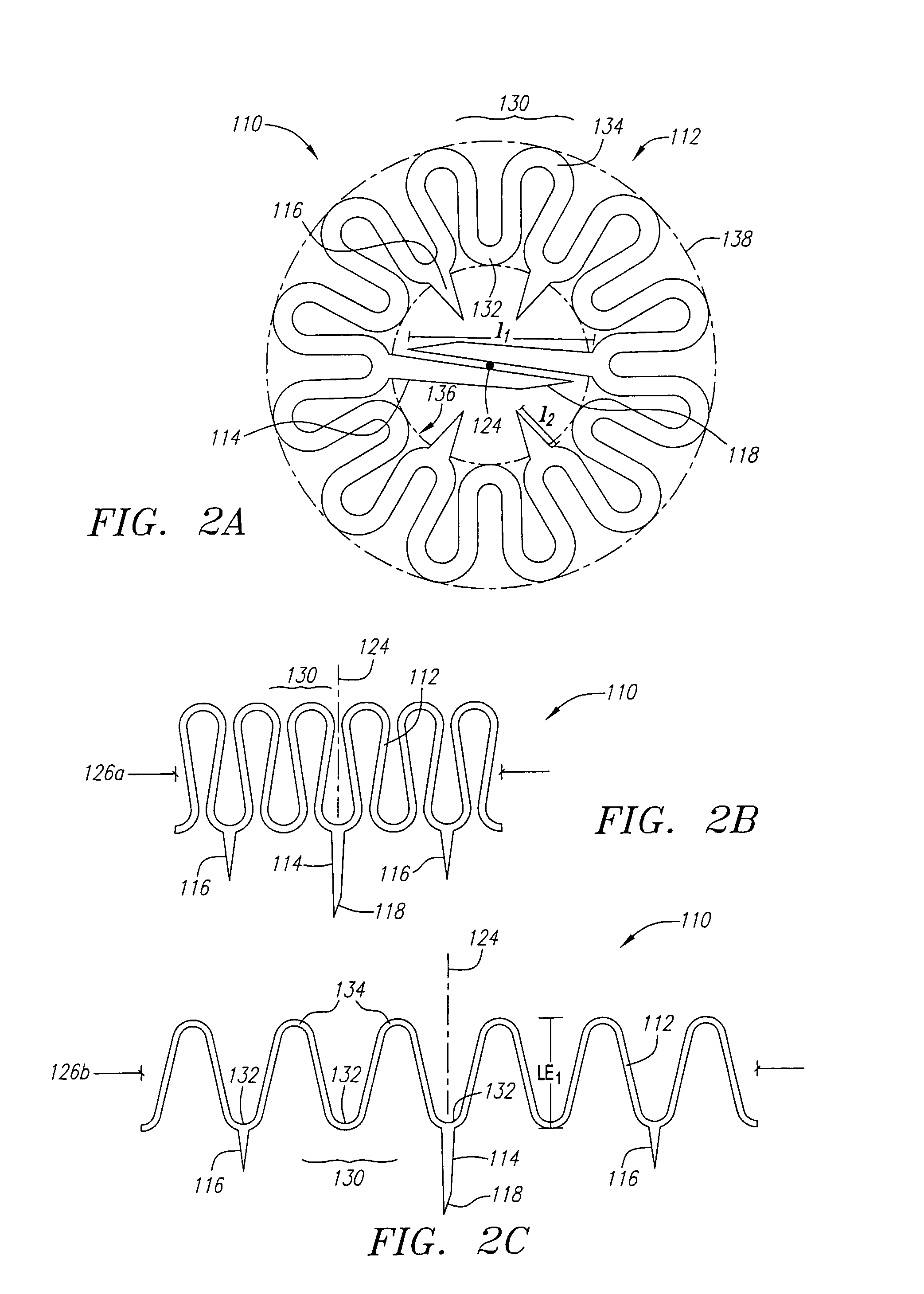Closure device and methods for making and using them
a technology of tissue and openings, applied in the direction of surgical staples, pulse generators, pulse techniques, etc., can solve the problems of time-consuming and expensive procedures, requiring as much as an hour of physician's or nurse's time, and uncomfortable for patients
- Summary
- Abstract
- Description
- Claims
- Application Information
AI Technical Summary
Benefits of technology
Problems solved by technology
Method used
Image
Examples
Embodiment Construction
[0041]Turning now to the drawings, FIGS. 1A–1C show a first preferred embodiment of a closure device or clip 10 for closing an incision, puncture, or other passage through tissue, e.g., communicating with a blood vessel or other body lumen (not shown). The clip 10 includes a body 12, which may be generally annular in shape and surrounds a central axis 24, and a plurality of tines 16 extending from the body 12. As used herein, an “annular-shaped body” includes any hollow body, e.g., including one or more structures surrounding an opening, whether the body is substantially flat or has a significant thickness or depth. Thus, although an annular-shaped body may be circular, it may include other noncircular shapes as well, such as elliptical or other shapes that are asymmetrical about a central axis.
[0042]The body 12 may include a plurality of looped or curved elements 30 that are connected to one another to form the body 12. Each looped element 30 may include an inner or first curved re...
PUM
 Login to View More
Login to View More Abstract
Description
Claims
Application Information
 Login to View More
Login to View More - R&D
- Intellectual Property
- Life Sciences
- Materials
- Tech Scout
- Unparalleled Data Quality
- Higher Quality Content
- 60% Fewer Hallucinations
Browse by: Latest US Patents, China's latest patents, Technical Efficacy Thesaurus, Application Domain, Technology Topic, Popular Technical Reports.
© 2025 PatSnap. All rights reserved.Legal|Privacy policy|Modern Slavery Act Transparency Statement|Sitemap|About US| Contact US: help@patsnap.com



